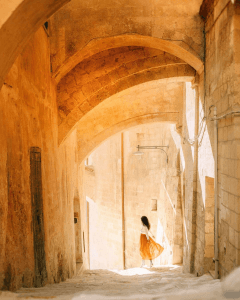Like last week, I had to go out and find this Instagram videographer. Once again, back to the listicles. This practitioner was number 4 on a list of ‘5 Video Artists to Follow on Instagram’.
The video I have chosen to analyse is this:
Why did I choose this video? It had a simple aesthetic and theme, however the production looked intricate, almost magical. I found its message, ‘let your light shine’, sweet and uplifting.
Who is the practitioner (what is their name?) and when were they practicing?
This Instagram animator and illustrator is named Rachel Ryle and she has been active since 2014. The video can be found at the link above.
With the photo or video you are examining, when was it produced (date)?
Rachel Ryle posted this video to her Instagram account @rachelryle on the 15th of June 2016, but due to the time and work required for a stop motion video, production probably began days or weeks prior to publication. (That alliteration!)
How was the photo or video authored?
Rachel Ryle created this stop motion video by drawing on physical paper and capturing it frame by frame from a top-down angle. She has used cutouts of illustrations like the projector and projector screen to make her illustrations move across the white background and she has also utilised small lights to illuminate the light bulb and projector.
The video has been captured in the square format popularised by Instagram and in the top left corner is her website URL, presumably added in during post-production.
The caption of this video is emotional and personal, speaking of the Orlando shootings that occured around the time of posting and also of Ryle’s own fear of her first Father’s Day without her father.
What I find most interesting about the authoring of this video is that really, it’s just a bunch of photos, but put one after another, they create a time sequence, a video. It’s photos becoming video. Additionally, it uses stop motion, a very old method of animation, yet it was published on Instagram, the epitome of modern online video.
How was the photo or video published?
This video was published on Rachel Ryle’s Instagram (@rachelryle) on the 15th of June 2016. It was also posted to Rachel Ryle’s YouTube account on the same day, with the title ‘Let It Shine! – Stop Motion Animation by Rachel Ryle’. Additionally, the YouTube video was embed in a post on Rachel Ryle’s website. As she also has a Facebook and Twitter account, I presume she posted the video (or links to other publications of the video) on those platforms too.
In this article about Rachel Ryle on Tech.Co, I discovered that she has a background in marketing and partnering with brands, one that she combined with her art and Instagram’s then-new video affordances to create beautiful and viral online videos. As the ‘internet continues to move in a more commercial direction’ (Berry 2018, p.9), it was this background that allowed Ryle to be an Instagram illustrator and animator full-time.
How was the photo or video distributed?
Because of the variety of platforms Ryle posted her video on, it would’ve reached a wide audience almost instantaneously. As I mentioned in last week’s post, thanks to smartphones, people can literally hold a copy of this video the second it is published. Online media makes publishing and distributing almost one and the same.
Often ‘we take for granted the delivery of different media forms streaming seamlessly across the web, just as much as we take for granted the seemingly unlimited storage aspects for photo and video’ (Berry 2018, p.8). Over two years after publication, I easily found Ryle’s video, on Instagram, YouTube, and her website. With the affordances of the internet, not only can people access content immediately after it is published, they can also continue to access it for years to come.
For my final thought: In this week’s reading, Berry (2018) writes that ‘videoblogs depend entirely on physical technology both during production, distribution and consumption’ (Berry 2018, p.19). And that’s the case for this video too. This video was produced frame by frame, with drawings done on old school pen and paper. Though the video file itself may be intangible, just a bunch of numbers, those numbers have to be stored on a hard drive. I have no idea how hard drives work. Maybe Rachel Ryle has no idea how hard drives work either. But regardless, we depend on its ‘materiality, and it’s [sic] stability, for [our] work’ (Berry 2018, p.19). Not only is the video stored on physical devices, it is also distributed and consumed on them.
I think it’s remarkably interesting that despite the growing intangibility of our data, stored in a cloud, our relationships, suspended in text bubbles, and our identities, defined by pages on various websites, we keep returning to the physical plane, the space where our bodies exist and play and interact.
It’s so very human and I think it’s lovely.
____________
References:
Berry, T 2018, ‘Situating Videoblogging’, Videoblogging Before YouTube, Institute of Network Cultures.




